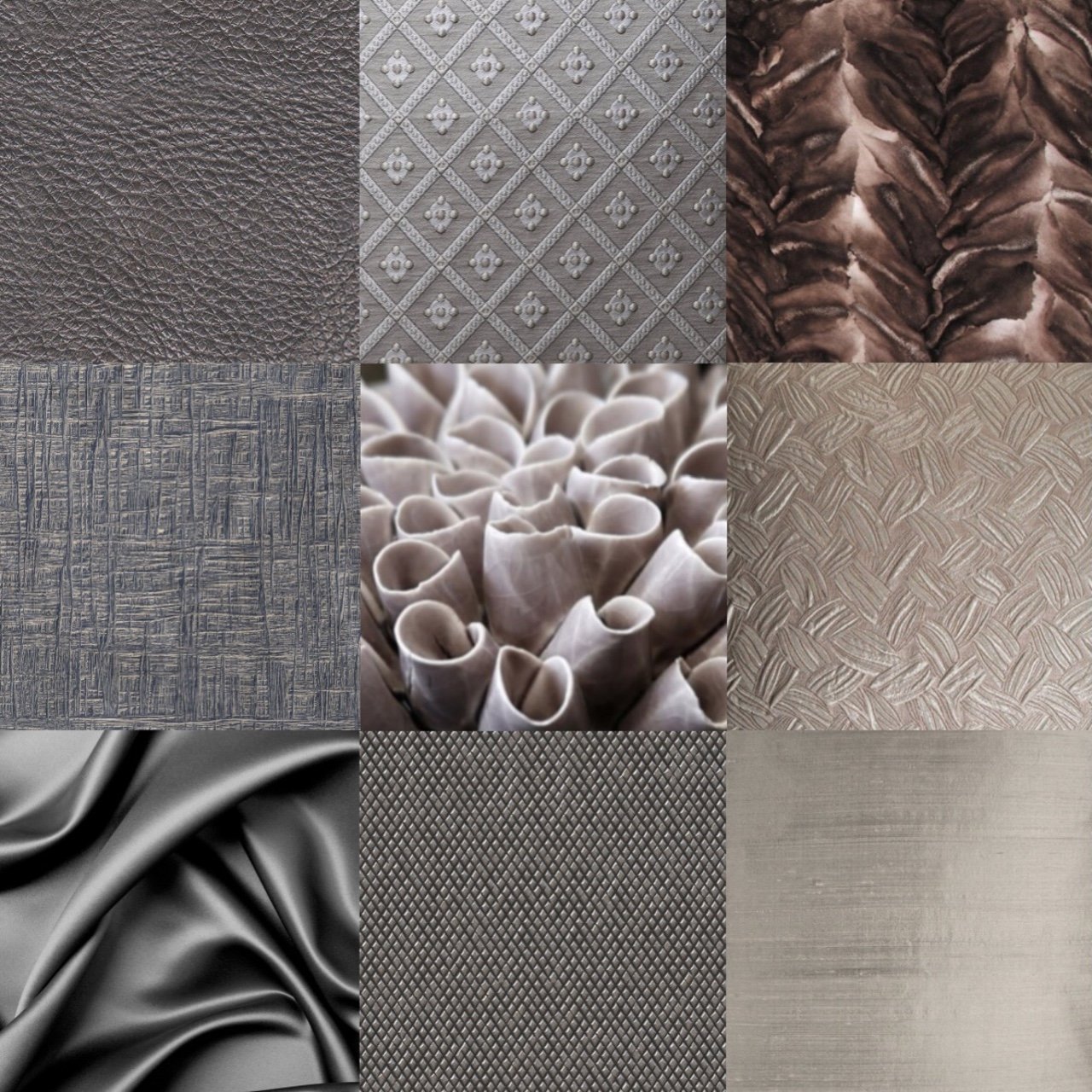Mind the Design! Part 12
TEXTURE
Part 12 in the Mind the Design! Series
Following last month’s discussion of patterns, this month we’re examining its cousin, texture, and the effect it has in our lives. Texture and pattern combine to add substance to the colors we choose in décor and, as with patterns, texture is perceived in terms of our individual response to it.
Texture can be encountered in two ways – physically and visually – and both ways are influenced by the emotional value a person assigns to texture through personal experience and individual physiology. Science can help explain this human reaction.
Texture is a very tactile and idiosyncratic experience. Some people are so sensitive to texture that it can send them out of a room upon touching something that is disagreeable to them- this is known as “sensory processing disorder” a condition in which individuals feel intense emotional, mental, or physical stress as a result of sensory overload. Others are less sensitive and experience varying degrees of “alexithymia”, a trait characterized by difficulties in identifying, describing and communicating emotions to others. The higher the alexithymia level, the more difficult it is for a person to identify and explain tactile sensations.
Hard and cold - while not particularly inviting, it will keep you focused on your work.
Visually, texture is evaluated by virtue of a person’s experience with the texture - such as having touched it before – as well as the eye’s perception of the element in question – does it look soft and smooth, or rough and jagged?
Several studies involving the perception of texture have been conducted. Research data from the National Research University Higher School of Economics (summarized in the article https://www.technologynetworks.com/neuroscience/news/which-textures-make-us-feel-happy-320188) demonstrated that “soft surfaces are generally associated with pleasant emotions, while rough surfaces [are generally associated] with unpleasant feelings. However, this is not always true. For instance, plasticine is soft, but is associated with disgust. And while glass pebbles might be hard, they are actually associated with happiness. Each of the textures offered to the respondents was usually associated with several emotions. For example, the kitchen sponge was associated [with] fear, disgust, and anger.”
Soft and cozy new skin on a fluffy blanket
As such, the commonly accepted ‘meaning’ of certain textures can influence and individual’s perception. Babies are born with basic emotions (i.e.: hunger, comfort, pain, fatigue) and are stimulated more by tactile experiences than visual ones because they have no reference points aside from basic needs. The longer we live, the more meaning we attach to texture, including secondary emotions like fear, despair, disgust, joy, and serenity. We tend to use metaphors for these textural feelings like “rough around the edges” to convey someone or something that is coarse and unrefined, and “soft as a baby’s bottom” to describe something good and pleasant to touch. When we see or feel something cold and hard, we associate it with remoteness, discomfort, alienation, whereas when we encounter something warm and soft, we feel comforted, safe, cozy.
Hygge settings offer comfort and serenity with soft, warm textures
When texture is employed in building and furnishing elements, we need to consider the value it offers in terms of the emotional response it generates by tactile and/or visual means and, therefore, how best to use it in our living and work environments. How, where and when one softens or hardens a setting depends on the item or room’s purpose. Bedrooms should be on the softer side to facilitate relaxation and a sense of calm. Offices or places where one’s attention needs to sharp and focused should use firmer cushions with slightly rougher fabrics than, for instance, a sofa in a living room that should be more inviting.
How best to use texture in your own décor? Hygge is an increasingly familiar Scandinavian method of decorating that intentionally uses design elements that engender comfort and coziness, including textures that are soft and warm, such as knit blankets, sweaters, and soft fabrics. For people who prefer firm surfaces and right-angles, the texture of the materials used can be softened by fabrics such as velvet, or wood. Use stone, wood, granite, leather, velvet, cotton, tweed, etc. to created senses of urgency or respite and curate the best environment for your personal needs. Pay attention to your own responses to materials; how they feel on your skin and how you sense them both physically and visually. Are you comfortable or unsettled? This can help inform your choices with regard to texture.
Spatial quality – where and how textures are used – can be accomplished in many ways as well:
Interesting wall surfaces are best when used in larger settings with natural light.
Offset rough textures with softer accents to balance the space
Deploy smooth and cold materials, such as stone, metal and glass in areas that need to be a cooler room temperature.
Use rough and hard textured walls in larger areas and in settings with natural light to allow the texture to breathe without feeling oppressive.
When textures are utilized successfully, a range of rough to soft materials can be used create a lively environment.
What can textures do for you? Think about how and where you can incorporate a variety of textures into your environment in a balanced and cohesive manner for the greatest positive impact.
Check back in June as we turn to new topics of interior design.





